Using your 6 senses on the golf course
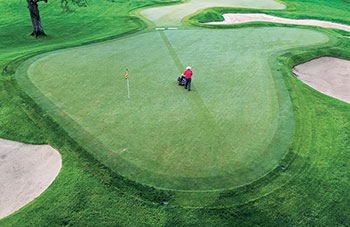
Photo: Jeff VerCautren
The other day, I was following our train of operators on the way out to their morning assignments. During my travels, I was overwhelmed by the dreaded smell of fuel leaking from something. I immediately radioed my assistants and mechanics to check every fuel cap on every piece of equipment on the course. Fortunately, we got lucky and we were able to locate the leaking equipment before too much fuel spilled on the turf. Most of it was on the cart path.
But what if I didn’t have that sense of smell? How long would it have been until someone saw that the fuel cap was not replaced? This got me thinking how much golf course superintendents use all six senses to create the beautiful scenes golfers experience. Let’s explore how each of those senses is critical to our job every day.
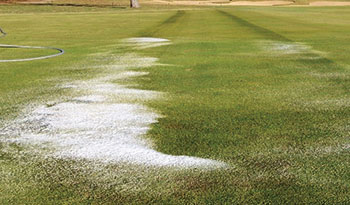
If it stinks, it’s dead. There’s no sugar coating it. (Photo: Jeff VerCautren)
1. Smell
The sense of smell is one of the two chemical senses. I still wonder how the operator didn’t smell or feel the fuel as it splashed out of the cart and onto his leg.
Along with detecting those dreaded fuel leaks, superintendents also use smell to detect disease or dead turf. A few years ago, when the Midwest had the hard winter Poa kill, our colleague Ed Nagle from the Chicago District Golf Association answered questions like, “Is my Poa dead from the ice?” His answer was, “Cut it open and smell it. If it stinks, it’s dead.” There was no sugar coating it.
For years, supers have used the sense of smell to detect black layer in their soil profile. Imagine how different the golfing experience would be without the smell of blooming crabapple trees on the 17th hole or the smell of the hawthorn tree, which some say smells like rotting flesh. The sense of smell easily is the sense that most people take for granted. How different would your world be without scent?
2. Taste
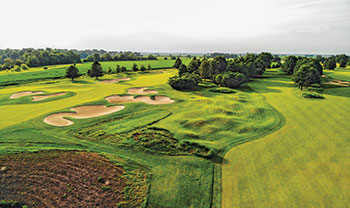
Use all of your senses to unlock clues about what’s happening on your course. (Photo: Charlie Dahlin)
Taste is the other chemical sense. It’s probably the least-used sense in our industry, but in certain circumstances it can be a helpful diagnostic tool. Black layer has a distinct taste in addition to the smell.
Superintendents also use taste to identify problems with fertilizer applications. Fertilizers aren’t always visually distinct. Multiple applications in a short period of time can result in a variety of different granules on your surfaces.
On one occasion for me, a particular granule just wasn’t breaking down. A quick taste, and it was readily apparent which product was causing the issue. There is a distinct taste to urea compared to ammonium sulfate. This isn’t something I recommend, and if you choose this route, use caution and drink lots of water the rest of the day. Maybe review your material safety data sheets just to be sure. I also recommend that once a week you use your taste buds to help your chef out and make sure the steaks are prepared correctly.
3. Touch
The sense of touch has a more obvious daily place on the golf course than smell or taste. I start out each morning by grabbing a handful of clippings from the first greensmower bucket. I feel the clippings to see how much sand is mixed in. How dry was the cut? Have we mowed out enough topdressing sand yet? Do I need more PGR? Less or more fertilizer in this week’s spray? A handful of clippings can yield a wealth of information just by touch. Many of you probably also feel the turf for grain. Do we need to verticut or brush soon? How tight does the canopy feel? Does it even feel smooth?
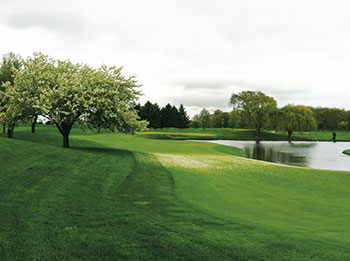
Kick off your shoes and walk barefoot across your greens. You’ll be able to better tell firmness and moisture levels. (Photo: Jeff VerCautren)
Touch used to be a more critical factor in evaluating the moisture content of your soils. It used to be the way to evaluate your water needs, feeling the plug for moisture to decide what to water. In the heat of the summer, this might be hundreds of plugs a day. Now we have fancy moisture meters that make this a less critical experience. However, I still recommend you break out the probe just to see what your proper moisture level actually feels like. If your TDR fails, you still have to be able to reliably water your course. Ever had a TDR randomly lose its calibration? I have. If you don’t know what the ideal soil moisture feels like, you could water incorrectly for a long time before you realize your moisture meter is out of whack.
Along those same lines, walking on the greens barefoot can pinpoint temperature and moisture differences on the turf surface. I wouldn’t recommend it after a fresh greens application, but it is amazing what you can feel with your feet, especially in terms of firmness. Shoe cushioning is so good these days that you hardly feel anything wearing shoes. Go barefoot and feel the differences.
4. Hearing
Hearing seems to be the sense that all superintendents (and husbands, according to my wife) seem to lose, but we absolutely know how important it is. Hearing can be our first indication of a problem, often before we are able to see anything. It’s also an important tool for problem solving.
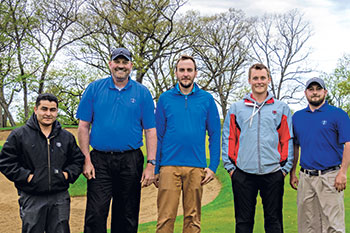
From left, Alfredo Tello, mechanic, Jeff VerCautren, superintendent, Matt Wagner, Zane Hartley and Aaron Harvey, assistant superintendents. (Photo: Charlie Dahlin)
Communication is hugely important for superintendents. To be a good communicator, you also have to be able to hear what others are saying. We’ve all heard the phrase “You hear, but you don’t listen.” Make sure you are not only hearing your owner, members, golfers and employees but you are actually listening to them. I can’t stress this enough.
5. Sight
It doesn’t need to be said how important sight is, but I’m going to say it anyway. You can’t do your job if you can’t see your product. We constantly look at everything. How are the mowers cutting? Are there streaks or skips? Any marcelling or washboarding? Were the bunkers raked well? Are ball marks being repaired and divots replaced? Any obvious irrigation problems from the previous night? I could go on and on. Usually by the time you see it, it’s too late.
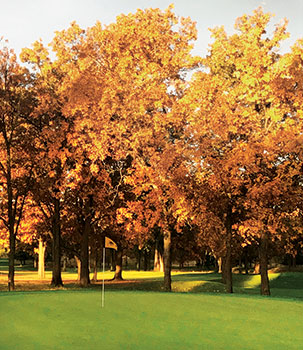
When in doubt, go with your gut. Often it’s the most important of the six senses. (Photo: Jeff VerCautren)
But just being able to see the golf course isn’t enough. You have to be able to envision the golf course. That’s more a skill or an art than a sense, but we need it. Your vision for the golf course needs to match member expectations, and you need to be able to visualize a way to achieve it. This is how we decide short-term and long-term goals. What did the golf course look like yesterday? What do we need to clean up or improve? What do we want the course to look like next season or in the next five years?
My former boss, Tim Perez at TPC Prestancia, talks about those seeing those things that need to be fixed but thinking there isn’t enough time. “Every time you see something that needs to be done and you drive by it,” he’d say, “think of me slapping you in the head. Your head will eventually start hurting and you will find a way to make time to get the job done.”
The sixth sense
Beyond what you smell, taste, touch, see or hear, there’s the sixth sense that’s intangible but that you absolutely can feel. It’s gut instinct. Sometimes, even though your five senses are telling you one thing, your gut will tell you the exact opposite. Many of you have followed your gut and been burned but have had at least as many — if not more — instances where going with your gut was the right thing to do.
For example, the weather forecast says it’s going to be sunny and 70 degrees for the next week. But your gut is telling you to get that fungicide out now because it’s going to rain the next five days and your dollar spot control isn’t going to hold. With something as dynamic and inexact as the weather, going with your gut can save your job.
Any of these examples (or the countless others you can think of) could have been much worse without even just one of the six senses. Use all your senses, just as you use all of your tools and equipment. Every day give your finishing touch. Take time to smell the roses. Take time to taste the fruits of your labor. Don’t just look; see. Don’t just listen; hear. And always trust your gut.
Jeff VerCautren is golf course superintendent and Matt Wagner is assistant superintendent at Rich Harvest Farms in Sugar Grove, Ill.










